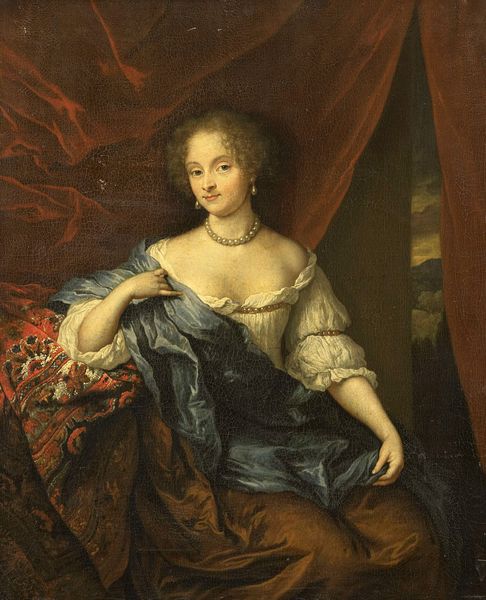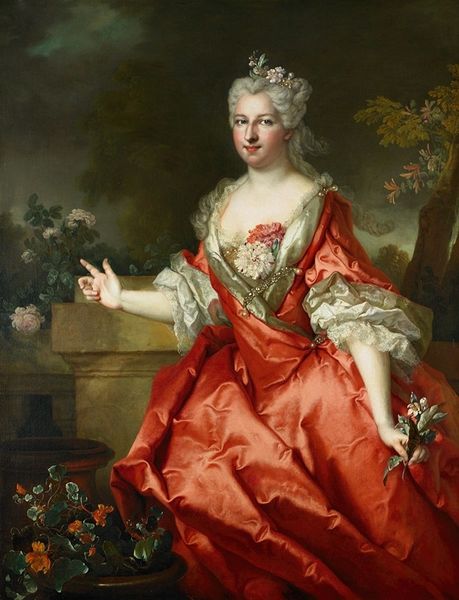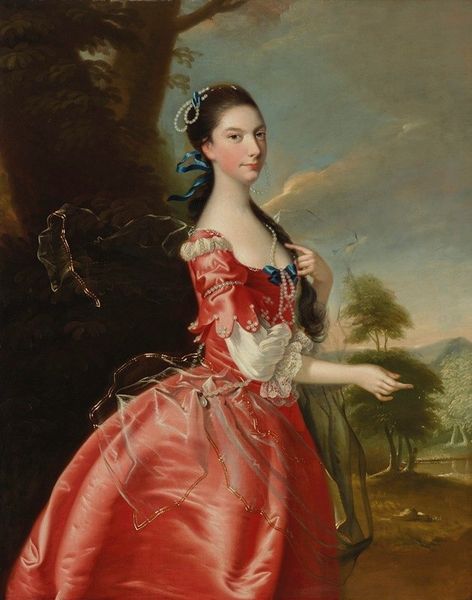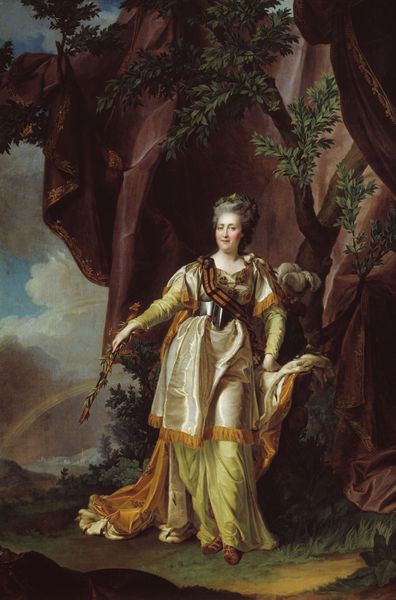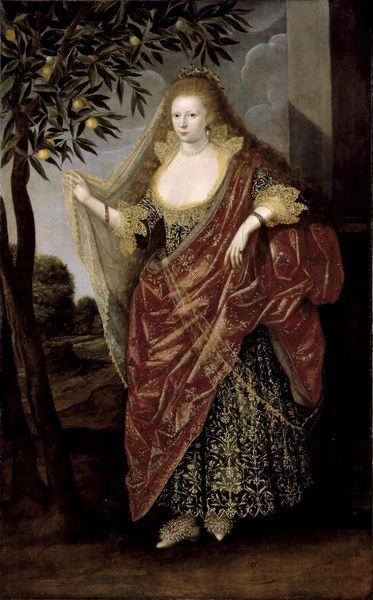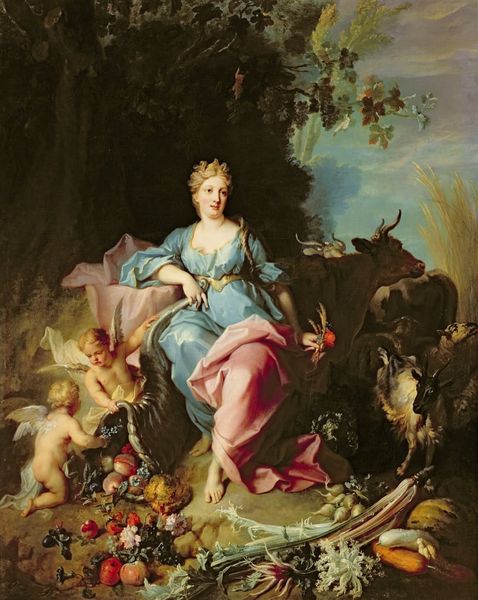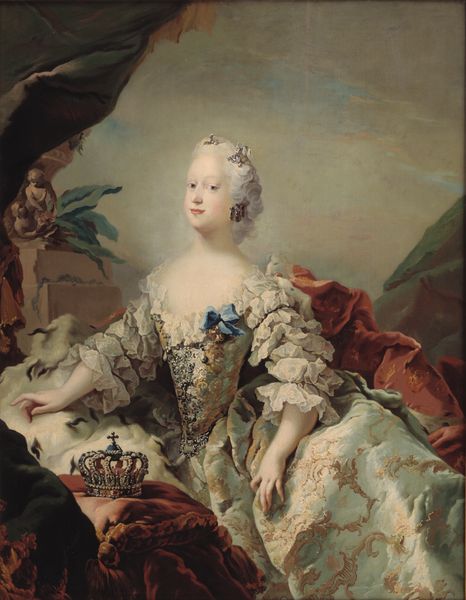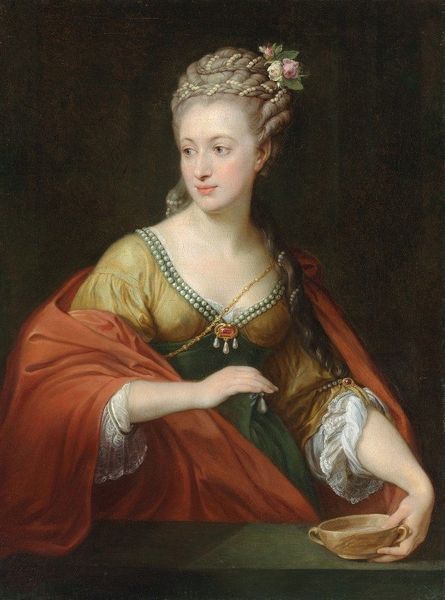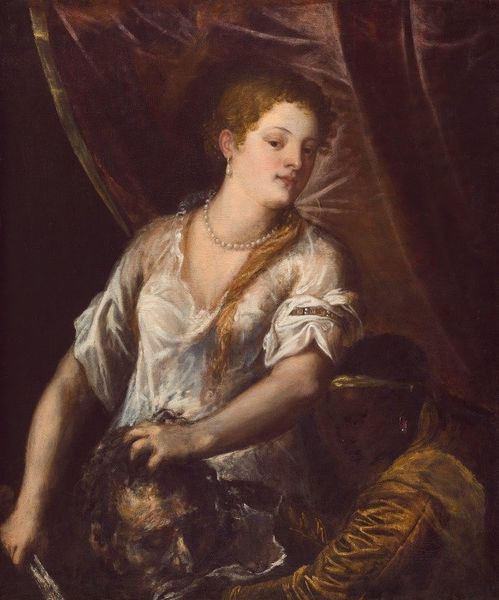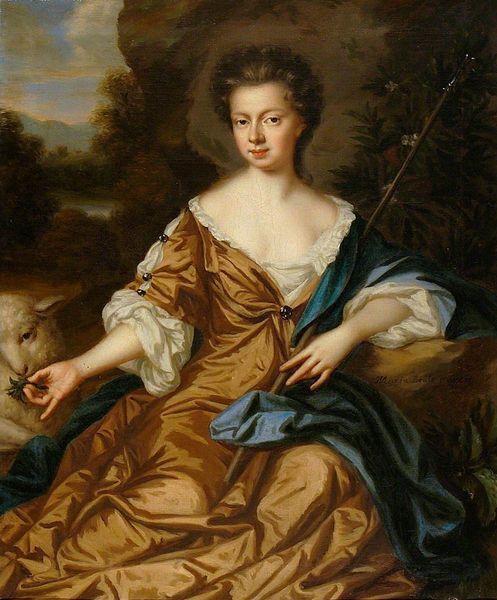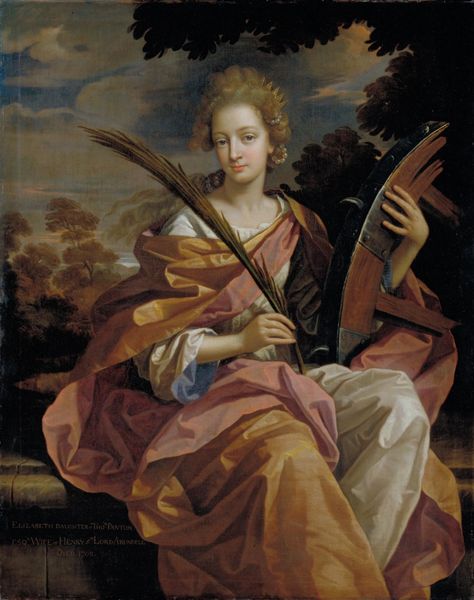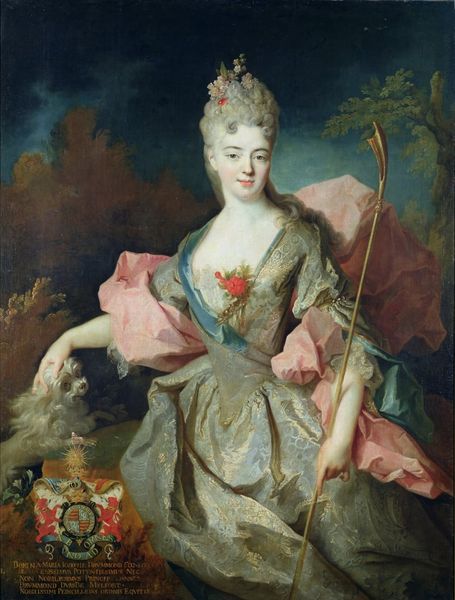
Portrait of Mary Adelaide of France as Diana 1745
0:00
0:00
jeanmarcnattier
Palazzo Pitti, Florence, Italy
painting, oil-paint
#
portrait
#
baroque
#
painting
#
oil-paint
#
mythology
#
genre-painting
#
history-painting
#
rococo
Dimensions: 95 x 128 cm
Copyright: Public domain
Curator: This is Jean-Marc Nattier’s “Portrait of Mary Adelaide of France as Diana,” painted in 1745. It's currently housed at the Palazzo Pitti in Florence. Editor: The immediate impression is striking, that a royal is staged to embody this persona of Diana, goddess of the hunt; a theatrical presentation with soft focus and color. There's something both powerful and subtly unsettling in it, which speaks volumes. Curator: Indeed. The work exemplifies Rococo portraiture, popular amongst the French aristocracy of the period. The socio-political function was clear: to legitimize power by aligning sitters with mythical figures. But there’s more than that here: gender, power, the illusion of female agency—all constructed for a male gaze. Editor: How do you see that male gaze at work here? Is it through Nattier, or the patronage system, the social structure or all of the above? What aspects or strategies would have supported or refuted conventional values regarding womanhood and authority in a genre and cultural moment? Curator: I think we can find traces in both artist, sitter, and culture: Adelaide’s beauty is emphasized, while her apparent power – embodied in the bow and arrows – is softened, perhaps neutered, by her pose. Consider the Rococo tendency toward artifice and the performative element of royal life. These images weren't about realistic likeness; they were about projecting power through established visual tropes and how these intersected. Editor: The politics of imagery are fascinating, especially when concerning portraits of women who were essentially symbols of nation-state, lineage and power and were also the objectification, and how society policed womanhood for these political purposes. Even in playing at being a goddess, she remained bound by terrestrial constraints, of nation, of the court, or male desire and/or fear. Curator: And consider where this now sits, the Palazzo Pitti. What does it mean when something originally designed to signal dynasty ends up being part of a public collection? Its meanings are subject to perpetual reinterpretation. Editor: Precisely, it speaks of history as fluid and multi-faceted. No one painting, and certainly not an audio guide, can reveal the whole picture. It’s about recognizing the layered histories involved. Curator: Agreed. A conversation is exactly what's needed; a beginning to a broader discourse.
Comments
No comments
Be the first to comment and join the conversation on the ultimate creative platform.
